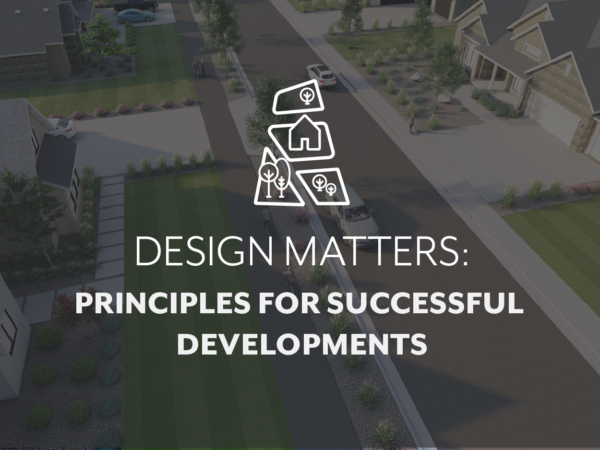
Design Matters: Principles for Successful Developments
Principles for Successful Developments: Balancing Aesthetics and Functionality
Balancing aesthetics and functionality in land development planning is a challenging yet essential task. It is central to creating appealing, sustainable, and successful developments. Aesthetics bring beauty, character, and a sense of identity to a development. Architectural design, landscaping, and the integration of art and culture can transform ordinary spaces into vibrant, engaging environments. On the other hand, functionality is the backbone that ensures a land development project serves its practical purposes effectively—from critical infrastructure and transportation networks to necessary public amenities. So how do we achieve this balance? Below, members of the FOCUS Land Planning Department share their insights on these principles for successful developments.
Collaboration for Effective Development Planning
Balancing aesthetics and functionality is not just a task for urban planners and architects. It requires a collaborative effort involving input from all stakeholders. “Typically, when there is greater alignment among all stakeholders, it facilitates more compatibility between aesthetics and functionality. When planners and developers genuinely seek to create a better space and work alongside city staff to create a development that aligns with a city’s general plan, functionality and aesthetics will come as a natural result,” said Chad Garner, Urban Planner and Project Manager at FOCUS.
Understanding Constructability
Another factor is understanding the existing site details, conditions, and constructability. This determines if the grand vision for a project is feasible. “The planners at FOCUS collaborate closely with our engineers to make sure we understand the constraints and challenges of the site and work through them together,” said Seth Vance, Manager of the Land Planning Department.
“Many times, the development concept, or “pretty picture”, doesn’t ultimately function,” said Vance. He continued, “The main challenges we see in our most recent projects are due to site topography and grading. For example, a road with curves and switchbacks may be planned to the top of a slope or mountain. But, when it’s engineered, the road can’t be built as initially planned. Understanding constructability issues early-on has helped us tackle many challenging projects and provide planning that will function and not require total re-design—ultimately saving our clients time and money.”
Garner points to FOCUS’ most recent experience on hillside developments as an example. One such project is Panarama Point in Herriman, Utah. It’s a luxury 600-acre community of single-family homes, a commercial center, and multi-family housing. FOCUS has collaborated closely with all stakeholders to maximize the breathtaking panoramic views and aesthetics of this majestic mountain while providing functionality in challenging mountainous terrain. The project is planned to include a dog park, a unique trail system with roadway right-of-way separated for bikers and walkers, and creative neighborhood signage.
Budget Considerations
Another issue that commonly puts aesthetics and functionality at odds is project cost and profitability. Site features like slope, wetlands, fault lines, access, and compatibility with existing uses often impact project budgets and feasibility. Municipal standards and requirements can also impact a project and its budget–from minimum open space and amenity requirements to density bonus incentives. To meet these challenges, a thorough site analysis and careful engineering empowers developers to maximize the development while simultaneously minimizing development costs.
Development Trends and Value Engineering
A few current trends that address functionality/aesthetics in land development projects include using art in otherwise unappealing areas, incorporating a unique architectural style or color in buildings, using utility structures to create site markers/identifiers, or purposing a detention pond as an open play area. Additional trends include optimizing existing features to explore value engineering. For example, planning techniques to balance site aesthetics and functionality may include maintaining existing trees/native grasses, keeping historic buildings as a focal point, or enhancing existing open space features like a canal or a creek.
As you can see, when aesthetics and functionality are successfully balanced, the result is a development that looks beautiful, operates efficiently, and contributes positively to the surrounding environment and community. To learn more about the insightful planning FOCUS provides reach out to Seth or Chad at info@focus-es.com.
